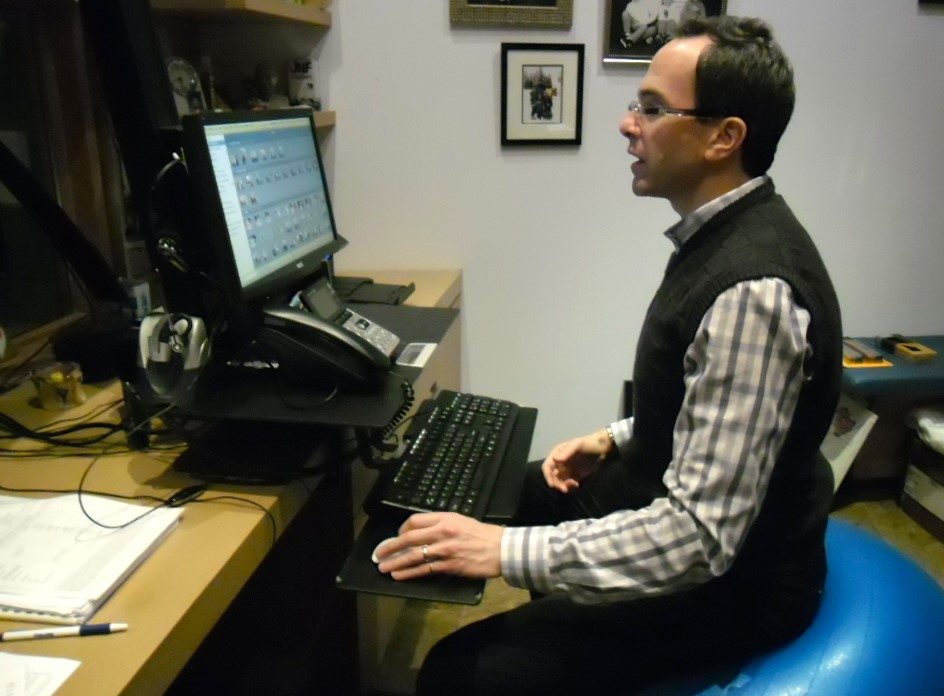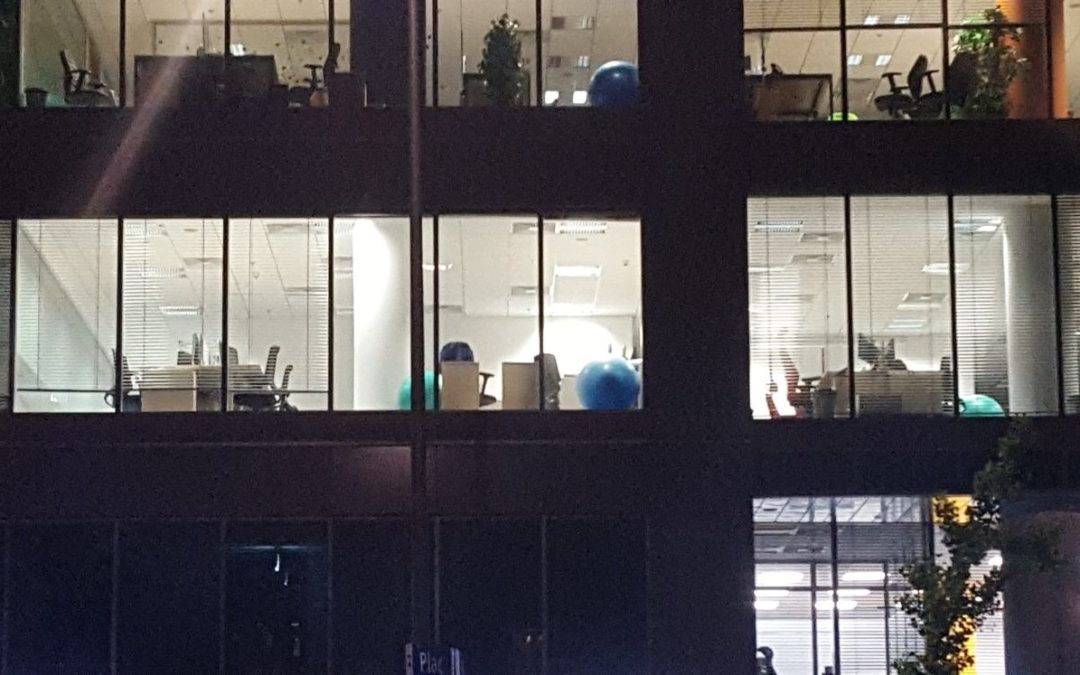Mix it Up. Have Different Seating Solutions around the Office. It’s an Investment in Productivity.
Overloading the muscles by maintaining any static position for prolonged periods, increases our risk of ergonomic injury.
Alternating sitting with standing improves productivity and reduces risk for people who hate to sit. But what about people who would never dream of standing?
Having different solutions around the office allows workers to reduce muscle load while actually seated at their desks. Here are a few solutions that engage different muscle groups while sitting.
The Physio Ball

The physio ball engages core muscles by removing back support. Ball chairs reduce some of the risks of sitting and are intended to keep your spine from collapsing into a slouch. Although possible to slouch when using them, by engaging different muscles than those when we are supported by the back of a chair, we are reducing the static load on them over time.
When legs are added to the ball, it ensures that the knees are below the hips, inviting the spine into its ideal “S” shaped alignment.

The Leaning stool

Leaning stools are an accessory for a standing workstation. When you sit in a chair, the front body is closed. With a leaning stool the open the hips are open preventing the lower back from slouching and compressing the spine. This can relieve strain when standing much of the day.
Frank Lloyd Wright’s Studio Chair 
Frank Lloyd Wright’s philosophy that Form and Function are One is expressed in the work stool he designed and used in his studio.
A precursor to the modern kneeling chair, it tilts the pelvis forward keeping the knees below the hips. As a result, the hip flexors are not shortened as they are in a regular chair, the spine aligns itself into its natural S-shaped curve, andp ressure is relieved on the lower back as the front body opens up.
The Kneeling Chair

Today’s kneeling chairs have added knee support to the basic concept. It’s important to adjust them and use them correctly to avoid straining the knees and I recommend alternating them with other solutions.
Don’t Replace, Alternate.
Sitting is here to stay so we still need ergonomically sound office chairs. I wouldn’t recommend any alternatives for full time use. However, alternate between a good office chair and other solutions and you will feel less fatigued at the end of the day.
Remember: It is maintaining any position for prolonged periods of time that increases ergonomic risk. Having a few alternatives around the office allows employees to select the one that’s right for them. Take a page from hi-tech and create the kind of office environment that makes it comfortable for people to stay at the office. It’s an investment in employee productivity.




 I have been helping people to sit and move comfortably since 1998. I am always looking for ways to help people improve their relationships with their bodies.
I have been helping people to sit and move comfortably since 1998. I am always looking for ways to help people improve their relationships with their bodies.